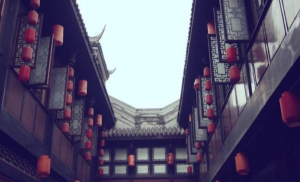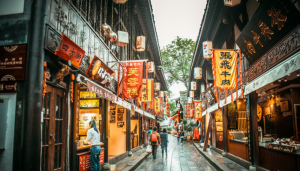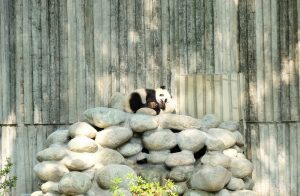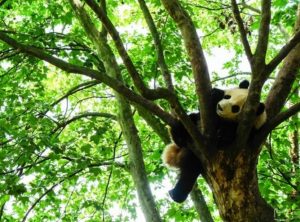 Wuhou Shrine, located on Wuhou Street in Chengdu, is a shrine to commemorate Zhuge Liang, the prime minister of the Shu Kingdom during the Three Kingdoms period. When it was first built, it was adjacent to the ancestral temple of Liu Bei, Emperor Zhao Lie, and later merged into the Han Zhao Lie Temple in the early period of Ming Dynasty.
Wuhou Shrine, located on Wuhou Street in Chengdu, is a shrine to commemorate Zhuge Liang, the prime minister of the Shu Kingdom during the Three Kingdoms period. When it was first built, it was adjacent to the ancestral temple of Liu Bei, Emperor Zhao Lie, and later merged into the Han Zhao Lie Temple in the early period of Ming Dynasty.
The garden area of Wuhou Shrine is located on the west side of Wuhou Shrine. It was originally the tomb of Liu Xiang, the chairman of Sichuan Province during the Republic of China. There are stone archway gate, three cave gate, four square pavilion, jianxin hall, tomb room and other buildings in the area, which is the only cemetery complex in the southwest with the north style. Wuhou Shrine is adjacent to Jinli Old Street and can be visited together.
Wuhou Shrine is also one of the local monuments. There are many tourists, the buildings are well preserved and protected, and they are very antique. The transportation there is also convenient.
Chengdu Wuhou Shrine is an ancient scenic spot, which shows the development of ancient times and human history, and here is the inheritance of the Chengdu Shu Kingdom culture, and there are records of people in the Bashu area. There is not only historical culture, but also many famous Bashu Snacks and Chengdu snacks that are very attractive, and the price is not expensive. There are many accommodations in the surrounding area.
 Wuhou Shrine is a must-see attraction in Chengdu. It is the most classic historical landscape of the Three Kingdoms culture and a national key cultural relics protection unit. There is a large courtyard at the back, extending in all directions, and there is a bonsai garden, and a small river whose water scenery is also good!
Wuhou Shrine is a must-see attraction in Chengdu. It is the most classic historical landscape of the Three Kingdoms culture and a national key cultural relics protection unit. There is a large courtyard at the back, extending in all directions, and there is a bonsai garden, and a small river whose water scenery is also good!
 Jinli was once one of the oldest and most commercial streets in the history of West Sichuan. It was famous all over the country during the Qin and Han Dynasties. At present, Jinli covers an area of more than 30,000 square meters, with a construction area of 14,000 square meters. The total length of the street is 550 meters. Taking western Sichuan folk houses in the late Ming and early qing dynasties as the outer coat, the culture of The Three Kingdoms and Chengdu folk customs as the connotation, it integrates tourism shopping, leisure and entertainment as a whole.
Jinli was once one of the oldest and most commercial streets in the history of West Sichuan. It was famous all over the country during the Qin and Han Dynasties. At present, Jinli covers an area of more than 30,000 square meters, with a construction area of 14,000 square meters. The total length of the street is 550 meters. Taking western Sichuan folk houses in the late Ming and early qing dynasties as the outer coat, the culture of The Three Kingdoms and Chengdu folk customs as the connotation, it integrates tourism shopping, leisure and entertainment as a whole.
 As the “Chinese cultural city” and “China’s best tourist city”, Chengdu carries thousands of years of history, and the UNESCO Creative Cities Network has awarded it the title of “Gourmet Capital”. Chengdu city attractions are more concentrated, you can spend one to two days visiting all of them. The best spots are scattered around the area, and it is more appropriate to arrange 2-4 days to explore the charm there. Dujiangyan and Qingcheng Mountain cannot be missed during your trip to Chengdu, and it usually takes 2-3 days to play there.
As the “Chinese cultural city” and “China’s best tourist city”, Chengdu carries thousands of years of history, and the UNESCO Creative Cities Network has awarded it the title of “Gourmet Capital”. Chengdu city attractions are more concentrated, you can spend one to two days visiting all of them. The best spots are scattered around the area, and it is more appropriate to arrange 2-4 days to explore the charm there. Dujiangyan and Qingcheng Mountain cannot be missed during your trip to Chengdu, and it usually takes 2-3 days to play there.